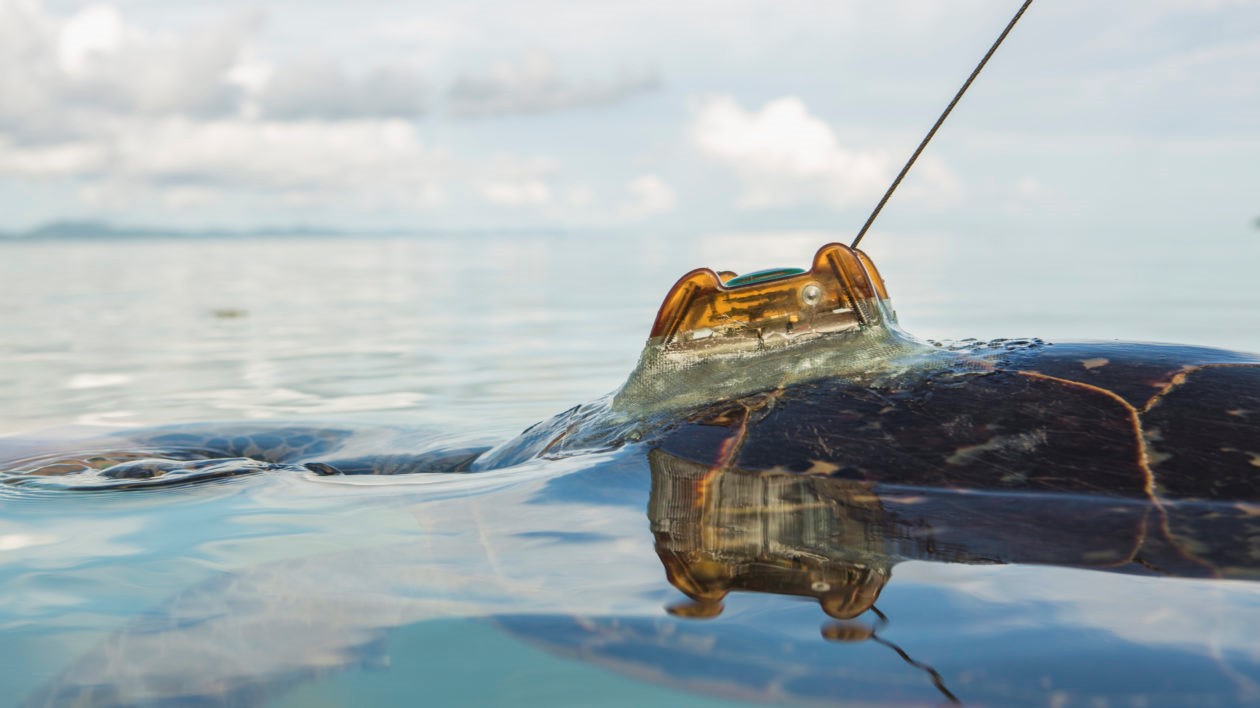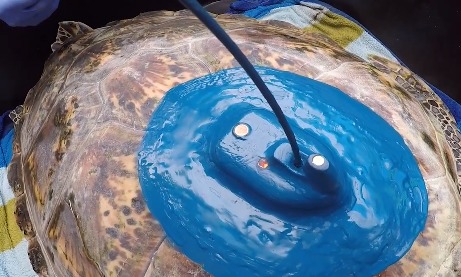
What You Need to Know
Wildlife Computers specialize in robust tracking solutions for hard-shell turtles. A range of shapes and feature sets are available, suitable for many different sizes and kinds of turtles. Our adult packages were designed to maximize data throughput and retention in challenging marine environments. These shapes feature antenna-protecting bumpers and urethane over-mold for enhanced durability. Alternatively, the juvenile packages were designed for small carapace footprint. Wildlife Computers offers attachment kits for turtle tags upon request. Kits include two-part quick-setting marine epoxy, fiberglass cloth, and full instructions. Epoxy dispensing guns are also available, sold separately.
Wildlife Computers also offers tags designed for leatherback turtles. Our leatherback designs are the product of many years of development working closely with leading researchers in the industry. The packages feature angled bases to match the curve of the turtle’s carapace. Leatherback tags are attached by looping a line made of stainless steel or monofilament through the turtle’s carapacial ridge.
Attachment Kit-000
Based on the method used by the New England Aquarium Rescue Department & Northeast Region Stranding Network.
Read MoreTurtle Tagging Tips
This is a collection of turtle tagging tips and advice compiled from our successful deployments over the years.
Initialize the Tag Before Deployment
First, you do not need to initial pop-up tags only SPOT and SPLASH models. Initialization ensures locations are received as quickly as possible after deployment, regardless of animal behavior. Tag initialization allows Argos to determine a quality location prior to the tagged animal being released.
Antifoul the Tag Before Applying it to the Turtle
One of the most important things you can do for a successful deployment – apply antifouling paint to your tags! Fouling organisms can be hugely detrimental to tagging studies. Especially for deployments in tropical waters, it is imperative that tags be protected against marine growth. Wildlife Computers endorses two anti-fouling paints, Micron and Propspeed. While there are dozens of options available, these are our favorites from years of testing and client feedback.
Beware of Duty Cycling
Duty cycling transmission days is not recommended for most sea turtle deployments. Sea turtle surfacing behavior is intermittent, making it a challenge to get good location fixes, even with all transmission hours turned on. By turning transmissions off for certain hours of the day (or for full days at a time) you further reduce the odds of achieving quality locations.
Tag Storage and Maintenance
Whether you are new to tagging or someone who has been doing it forever, you can find some great information in your tag’s user guide. Be sure to check out the tag storage guidelines to learn how to put your tag in “Stop” or “Shutdown” mode, storage temperature recommendations, and how to exercise the batteries to avoid passivation.

Tagging a Sub-adult Green Sea Turtle
with Kevin Lay
This video shows how to tag a turtle using Attachment Kit-000. This technique uses a very small attachment footprint, only marginally larger than the tag base itself. There is no need to smear epoxy all over the turtle. The combined weight of the tag and all the glue should not exceed 3% of the turtle’s body weight. The health and condition of the turtle should also be carefully evaluated.
